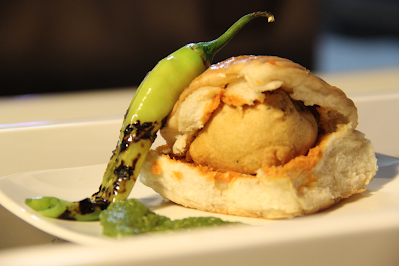Junk Food Day
July 21 is celebrated as Junk Food Day every year. The term 'junk food' is used for food that has very little nutritional value and contains high amount of fat, calories, sugar and salt. This kind of food has little or no proteins, vitamins, minerals or fibres, all of which are essential for the body.
Junk food and fast food are mainly mid-20th century inventions. Michael F Jacobson, co-founder of the Centre for Science in the Public Interest (CSPI), coined the term 'Junk food' in 1972. However, the term only became popular in 1976 due to a novelty song, 'Junk Food Junkie' by Larry Groce. Food items like candy, chips, French fries, chewing gum, soft drinks, pizza and burgers are labelled as Junk food.
According to doctors, there is a direct relation between the rise in the popularity of junk food and rise in the cases of obesity, heart disease, high blood pressure, tooth decay and other health problems. Let’s take a look at some popular junk food items and how they affect our health.
Pizza:
Originally from Italy, pizza is a combination of dough, sauce, vegetables, meat and cheese. Pizzas are laden with high amounts of sodium and refined carbohydrates. They have a high calorie count, which is why eating too much pizza can lead to weight gain and weight-related health problems.
A standard serving of cheese pizza contains 18.5gms of fat and 675mgs of sodium. The fats in pizza lead to weight gain and obesity. The refined carbohydrates in the white flour used to make pizza affect the glucose level in the body and the high salt content can also raise blood pressure.
French fries:
French fries originated in Belgium and were eaten as a substitute for fried fish in the 1600s when rivers froze during the winter. US President Thomas Jefferson was credited with introducing French fries in the US in 1801.
Potatoes are a source of fibre and potassium, which help in digestion and give you adequate energy. However, if they are fried, potatoes become an ultimate source of transfat, which elevate cholesterol levels and clog the arteries in the heart. French fries tend to be over-loaded which sodium, which results in greater risk of obesity. Deep-frying also increases the cancer-causing substances in them.
Soft drinks:
There are hundreds of varieties of soft drinks available in the market. These contain carbonated water, sweeteners and natural or artificial flavours. Soft drinks have zero nutritional value and contain caffeine, artificial colours and preservatives, which are harmful for the body. Sweeteners in soft drinks include sugar, high-fructose corn syrup, fruit juice and sugar substitutes. It is proven that adults who drink soft drinks or sugar sweetened beverages are 27% more likely to be obese. Consuming a lot of soft drinks also causes kidney damage, weak bones, high blood pressure and dehydration.
Sweets and candy:
Egyptians made the earliest candies by combining honey with fruits, nuts, dates and spices. Indians are credited with making the first sugar candy around 250 AD. Modern candies were first made around the 16th century and the sweet manufacturing industry developed in the early 19th century. Manufacturers created chocolate bars in the 1840s by mixing together cacao butter, cocoa powder and sugar.
Binging on candy can cause dental cavities and other oral issues. Sugar-based sweets are not only filled with high doses of fructose and sucrose, which increase blood sugar levels, but also contain harmful artificial colours and flavours.
Do you know why the burgers in commercials look so appealing and near perfect? It is because they are undercooked. A burger or a hamburger is very similar to a sandwich and consists of one or more fried patties placed inside a sliced bun. Burgers first appeared during the 19th or early 20th century. They are sold at fast-food joints and restaurants and are served with cheese, lettuce, jalapenos, onions, tomatoes, tomato sauce, mayonnaise and mustard.
The typical bun or bread in a fast-food burger contains 20 different ingredients, some of which are also used to make fertilisers, explosives and even yoga mats! Ketchup is made with high-fructose corn syrup and a single slice of cheese can add up to 200 calories and 500mgs of sodium. Most of the bottled sauces used in burger are processed, containing artificial colours, flavours and preservatives. The meat used in fast-food burgers is also processed and mechanically treated with ammonia to kill bacteria.
Vada Pav:
The Indian version of the burger, a vada pav is a speciality of Maharashtra and is thought to have been invented in 1971. A vada is made of potato mixed with spices and vegetables. It is coated with gram flour batter and then deep fried. It is served between a bun (pav) along with chutney. A single vada pav can contain as many as 500 calories. One of the major health-related issues associated with eating vada pavs is that of hygiene. They are made under different circumstances, usually alongside roads, which compromises the quality of the food.
Doughnuts:
Although the origin of the doughnut or donut is unknown, different nationalities have their own version of the treat. Some historians believe that the first to introduce the modern doughnut were the Dutch, in the form of olykoeks or oily-cakes during the mid-19th century. Doughnuts are served in hundreds of flavours around the world from chocolate and cream to bubble gum and even cheese.
A doughnut is deep-fried and contains a large amount of saturated fat and transfat. On an average, a glazed doughnut contains 240 calories and a single chocolate glazed doughnut has around five teaspoons of sugar. The sugar in the doughnuts makes them very addictive and hard to resist. Consuming doughnuts excessively will result in weight gain, leading to heart-related issues, high cholesterol and high blood sugar.











